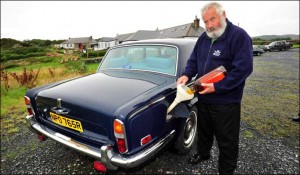Following up on my co-generation/symbiosis post from earlier this summer, I came across a great example of this principle in action the other day. This story explains how scientists at Edinburgh Napier University in Scotland have developed a way to turn two byproducts of whiskey production into a more-than-viable alternative to corn ethanol. Treading on stereotypes for a moment, I have to say this sort of discovery would seem destined to have been made by a Scottish or Irish scientist.
 The article explains that the biofuel made from the byproducts, butanol, packs 30 percent more energy per unit than does ethanol, can be easily blended into gasoline at refineries, requires no modification to engines that use the blended fuel and does not pick up water, making it far easier to handle and use than the hydrophilic ethanol. This is all terrific, and from a symbiosis standpoint, the really good news is that it’s derived from a waste product created by a useful, needed, everyday manufacturing activity.
The article explains that the biofuel made from the byproducts, butanol, packs 30 percent more energy per unit than does ethanol, can be easily blended into gasoline at refineries, requires no modification to engines that use the blended fuel and does not pick up water, making it far easier to handle and use than the hydrophilic ethanol. This is all terrific, and from a symbiosis standpoint, the really good news is that it’s derived from a waste product created by a useful, needed, everyday manufacturing activity.
Truth be told, this isn’t the first time I’ve come across this sort of useful byproduct in distilling. CNET’s Martin LaMonica covered a story last year wherein Sierra Nevada Brewing entered into a partnership to turn its beer making leftovers into a feedstock for a home ethanol start-up. Out on the road, distilling byproducts are already helping save money while improving safety. Read all the way to the bottom of this Wall Street Journal article from 2009 and you’ll see that leftovers from the rum-making process are an effective supplement to road salt.
So while drinking and driving don’t mix, distilling and driving may be a rather different story.